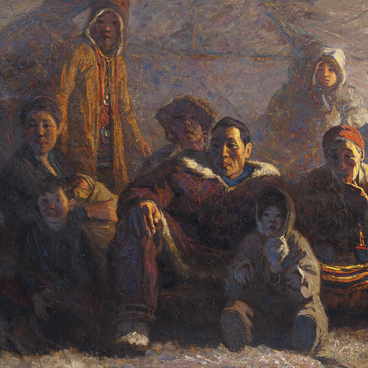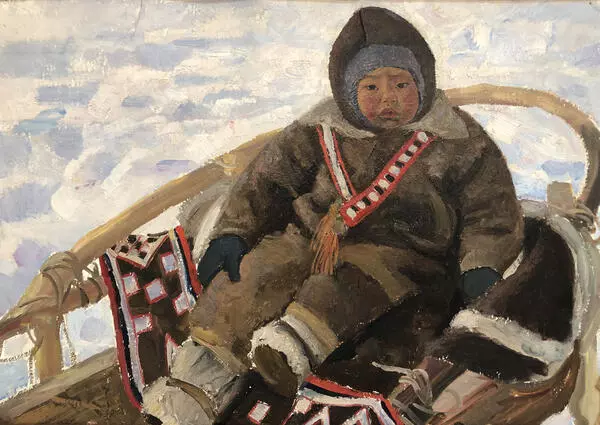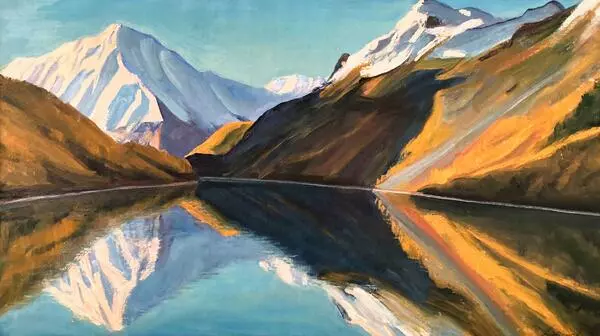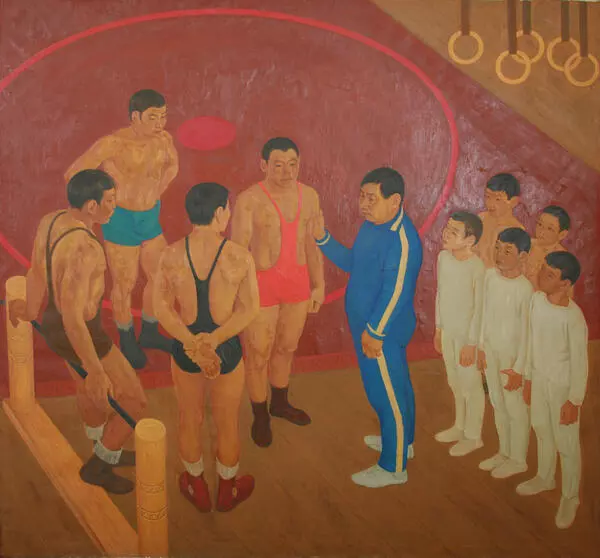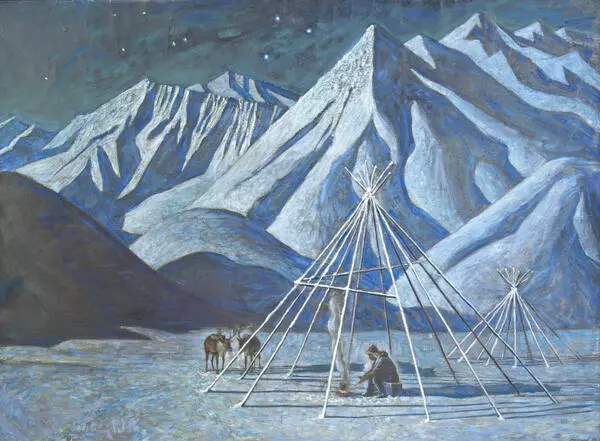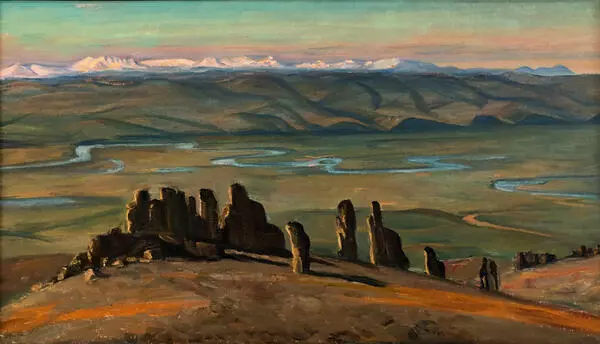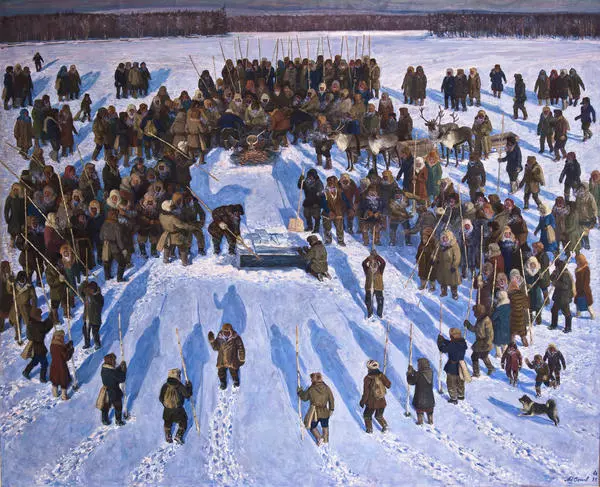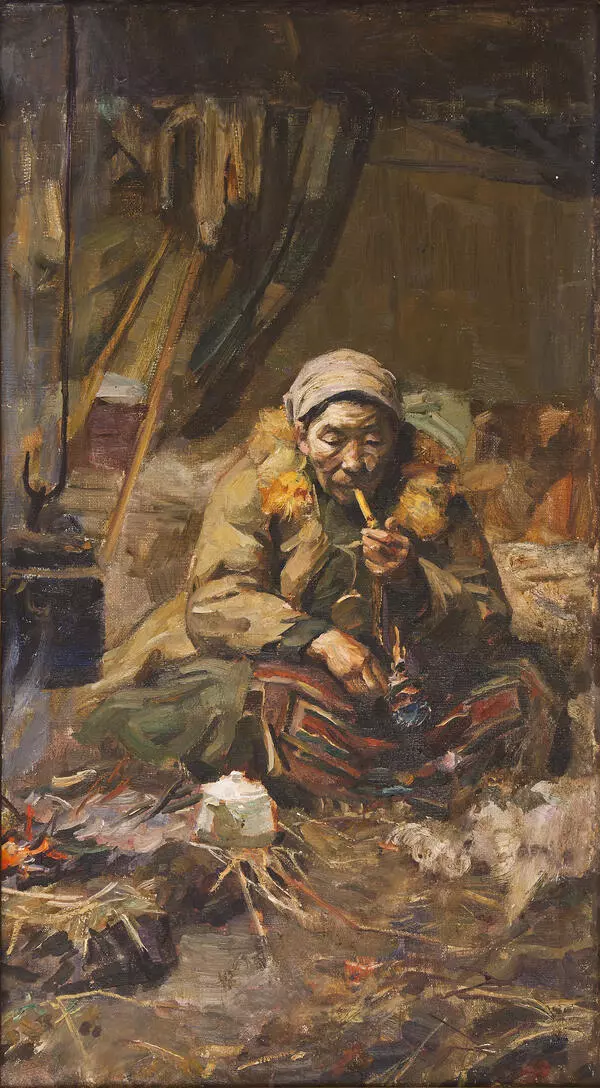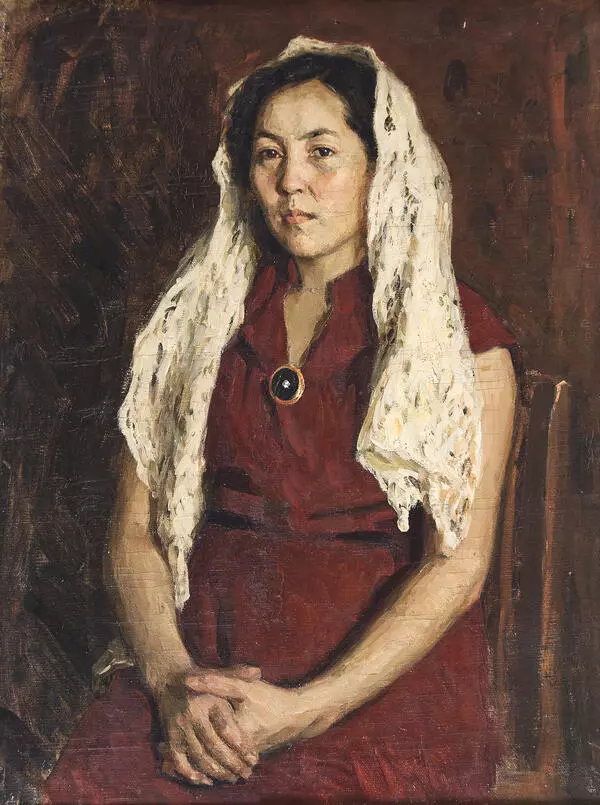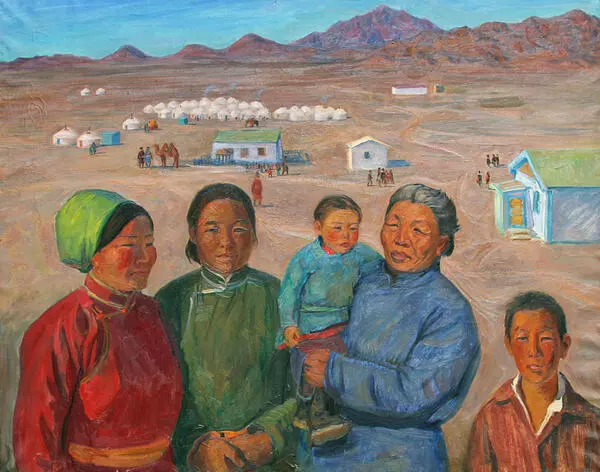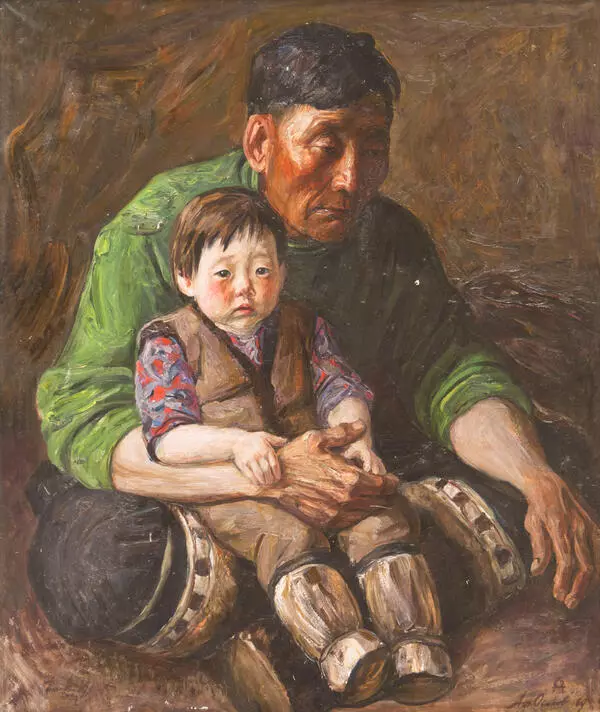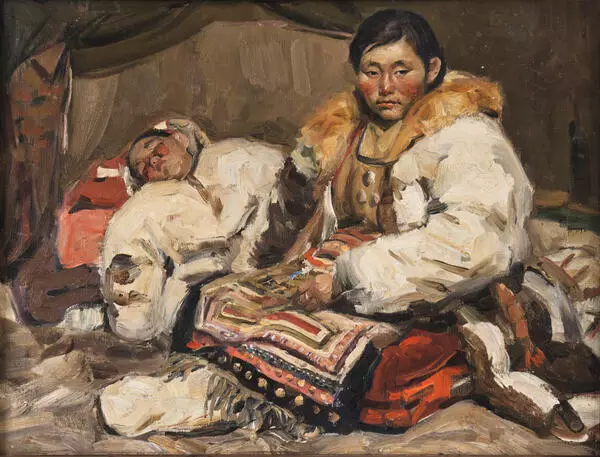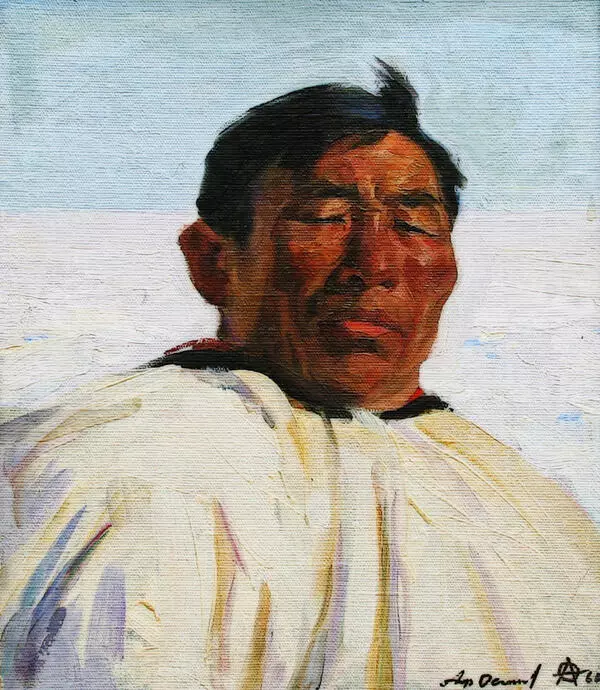The National Art Museum of the Republic of Sakha (Yakutia) presents Afanasy Osipov’s painting “On the Yakut Land”. Afanasy Osipov is a Yakut painter, academician of the Russian Academy of Arts, People’s Artist of the USSR, winner of the Ilya Repin State Prize of the Russian Federation. Afanasy Osipov was born on February 28, 1928 in Gorny Ulus in Yakutia. After finishing school and technical school, he went to Moscow where he entered the Moscow secondary art school at the Moscow State Academic Art Institute named after V.I. Surikov, and then entered the institute itself. The artist participated in many all-union and foreign exhibitions.
After returning to his homeland, Osipov taught at the Yakut art school, traveled a lot around the republic, for many years headed the Union of Artists of Yakutia, and organized exhibitions. He painted portraits of peasants and Yakut intellectuals, paintings of large construction sites in the Republic, and landscapes. But most of all, Afanasy Osipov is known for paintings that depict mountains, such as Moma and Oymyakon Ridges, native mountains on the Blue River, and Lena Pillars. Over time, the geography of his mountains expanded. He painted the mountains of Kyrgyzstan, Buryatia, and Mongolia, Nepal, the European Alps. After the death of the painter, one of the peaks of the Moma Ridge was named after him.
Today, Osipov’s works are stored at the National Art Museum of the Republic of Sakha (Yakutia), the State Tretyakov Gallery, the State Russian Museum, and private collections in Russia and abroad.
The picture “On the Yakut Land” shows a scene from the life of the village on a hot summer day. Against the background of a mown field and sunny hills, there are several haymakers. The artist arranged the group symmetrically. Two guys stand on the sides, with their backs to the viewer, and three guys stand in the center, all holding light wooden pitchforks, the so-called “atyrdyakh”. Thus intersecting, the pitchforks create an exquisite, intricate zigzag rhythm on the canvas. In the Yakut language, August is called “atyrdyakh yya”. Literally. it is the “month of pitchfork”, that is, the time of haymaking. The contrast of light wooden tools and monumental figures is expressive. The artist draws the plastic movements of the Yakut guys, a lively game of tense muscles, skillfully showing the human figure in natural and relaxed poses. They are stocky and look like something out of a Renaissance painting.
After returning to his homeland, Osipov taught at the Yakut art school, traveled a lot around the republic, for many years headed the Union of Artists of Yakutia, and organized exhibitions. He painted portraits of peasants and Yakut intellectuals, paintings of large construction sites in the Republic, and landscapes. But most of all, Afanasy Osipov is known for paintings that depict mountains, such as Moma and Oymyakon Ridges, native mountains on the Blue River, and Lena Pillars. Over time, the geography of his mountains expanded. He painted the mountains of Kyrgyzstan, Buryatia, and Mongolia, Nepal, the European Alps. After the death of the painter, one of the peaks of the Moma Ridge was named after him.
Today, Osipov’s works are stored at the National Art Museum of the Republic of Sakha (Yakutia), the State Tretyakov Gallery, the State Russian Museum, and private collections in Russia and abroad.
The picture “On the Yakut Land” shows a scene from the life of the village on a hot summer day. Against the background of a mown field and sunny hills, there are several haymakers. The artist arranged the group symmetrically. Two guys stand on the sides, with their backs to the viewer, and three guys stand in the center, all holding light wooden pitchforks, the so-called “atyrdyakh”. Thus intersecting, the pitchforks create an exquisite, intricate zigzag rhythm on the canvas. In the Yakut language, August is called “atyrdyakh yya”. Literally. it is the “month of pitchfork”, that is, the time of haymaking. The contrast of light wooden tools and monumental figures is expressive. The artist draws the plastic movements of the Yakut guys, a lively game of tense muscles, skillfully showing the human figure in natural and relaxed poses. They are stocky and look like something out of a Renaissance painting.



